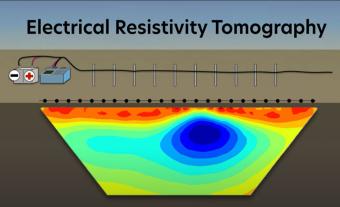
How can we explore what’s underground without digging? Electrical Resistivity Tomography (ERT) is a geophysical method that allows scientists to create images of the subsurface by measuring how electrical currents move through different underground materials.
This animation introduces educators and students to the principles of ERT and its applications in environmental science, engineering, and geophysics. Viewers will see how electrodes placed on the ground send electrical signals into the Earth, and how variations in how the current flows help map features like groundwater reserves, pollution zones, and hidden cavities. By analyzing these electrical patterns, scientists can better understand subsurface conditions and make informed decisions for resource management, environmental protection, and infrastructure planning.
This animation provides a clear and engaging overview of ERT’s role in real-world problem-solving, making it an excellent resource for classroom discussions on geophysical methods and Earth science investigations.
We encourage the reuse and dissemination of the material on this site as long as attribution is retained. To this end the material on this site, unless otherwise noted, is offered under Creative Commons Attribution (CC BY 4.0) license